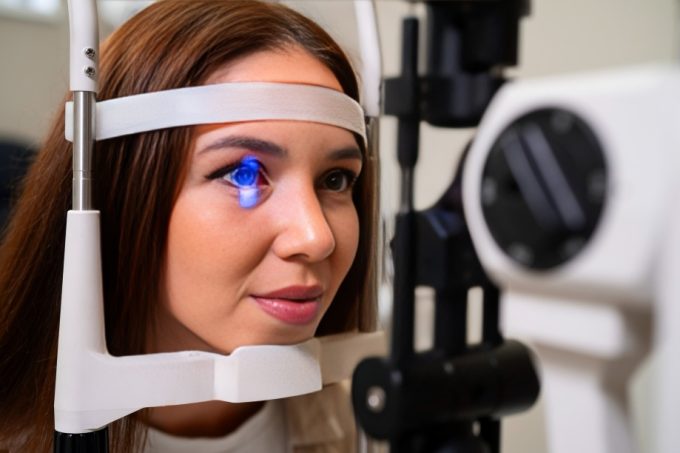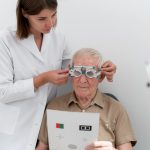Learn what to expect when visiting the Emergency Department. Learn More
-
CALL: +971 4 3454040

- Medical Technology
- August 25, 2025
- 5 MINS READ
Vision is one of the most important senses, and maintaining healthy eyes is essential for leading a fulfilling life. However, many people experience issues with their retina, the light-sensitive tissue at the back of the eye that is responsible for processing images and sending them to the brain. Retinal Disorders can lead to vision impairment, discomfort, or in severe cases, permanent blindness if left untreated. Therefore, understanding their causes, how they are diagnosed, and what treatment options exist is vital for early prevention and management.
Understanding the Retina and Its Importance
To begin with, the retina plays a central role in how we see the world. It converts light into electrical signals, which are then interpreted by the brain as images. Without a properly functioning retina, even the clearest cornea or lens cannot provide good vision. Consequently, when Retinal Disorders occur, they disrupt this process, leading to visual problems that range from mild blurriness to complete vision loss.
Common Causes of Retinal Disorders
Several factors can contribute to the development of Retinal Disorders, and they often differ depending on the individual’s age, lifestyle, or medical history. Moreover, understanding these causes helps patients recognize risks early and seek professional care.
-
Genetics and Family History: Inherited retinal conditions such as retinitis pigmentosa often run in families.
-
Age-Related Changes: Conditions like age-related macular degeneration become more common with aging.
-
Medical Conditions: Diabetes, hypertension, and cardiovascular diseases can damage blood vessels in the retina.
-
Eye Trauma: Injuries to the eye may cause retinal tears or detachments.
-
Lifestyle Factors: Smoking, poor diet, and excessive screen exposure can accelerate retinal damage.
Thus, a combination of biological, medical, and lifestyle factors contributes significantly to the onset of these conditions.
Symptoms to Watch Out For
Detecting Retinal Disorders early is crucial, and being aware of symptoms can make a difference in protecting vision. Some of the common warning signs include:
-
Sudden flashes of light in the vision field.
-
Appearance of floaters (small spots or shapes drifting across the vision).
-
Blurred or distorted vision.
-
A shadow or curtain-like effect over part of the visual field.
-
Difficulty adapting to low-light environments.
Since these symptoms may appear gradually or suddenly, it is important not to ignore them and instead consult a qualified specialist as soon as possible.
How Retinal Disorders Are Diagnosed
The process of diagnosis has advanced significantly with the help of modern technology, making it easier to identify retinal issues at an early stage. Eye care professionals usually perform several tests to evaluate the health of the retina, which may include:
-
Dilated Eye Exam: Drops are used to widen the pupils so that the retina can be viewed in detail.
-
Optical Coherence Tomography (OCT): A non-invasive imaging test that provides cross-sectional images of the retina.
-
Fluorescein Angiography: A dye is injected into the bloodstream, and special cameras highlight blood vessel abnormalities.
-
Ultrasound Imaging: Used in cases where the retina is difficult to view due to bleeding or other obstructions.
By combining these methods, specialists can confirm the presence of specific Retinal Disorders and recommend appropriate treatment.
Treatment Options Available
Fortunately, there are numerous treatment options available today to manage and control Retinal Disorders. Depending on the condition’s severity and type, the following approaches are often used:
-
Laser Therapy: This can seal retinal tears, prevent further detachment, or reduce abnormal blood vessel growth.
-
Injections: Medications such as anti-VEGF drugs can slow the progression of diseases like macular degeneration or diabetic retinopathy.
-
Surgery: Procedures such as vitrectomy may be required to remove vitreous gel, repair detachments, or address complex conditions.
-
Lifestyle Modifications: Eating a diet rich in leafy greens, maintaining good blood sugar control, quitting smoking, and regular exercise can improve eye health.
-
Regular Monitoring: Some conditions cannot be cured completely but can be managed effectively with frequent check-ups and timely interventions.
Hence, while not all retinal conditions are preventable, many can be managed or slowed down with timely and appropriate care.
Living with Retinal Disorders
Although living with retinal disorders can be challenging, it does not mean giving up on quality of life. With modern treatments such as cataract surgery, advanced assistive technologies, and positive lifestyle changes, many people continue to lead active and fulfilling lives. Low-vision aids, adaptive technologies like screen readers, and ongoing professional support can further help patients maintain independence and confidence in daily activities.
Final Thoughts
Eye health should never be taken for granted, and awareness of Retinal Disorders is the first step in protecting one’s vision. With advancements in diagnosis and treatment, patients today have more opportunities than ever to safeguard their eyesight. Medical institutions such as Medical Specialists Center continue to provide modern solutions and compassionate care to individuals facing these challenges. Ultimately, consulting a qualified eye specialist in Dubai ensures timely guidance, accurate diagnosis, and access to personalized treatment plans that can help preserve vision for the future.
FAQs About Retinal Disorders
Q1: Who is most at risk for developing retinal disorders?
Individuals with diabetes, high blood pressure, a family history of retinal disease, or those over the age of 50 are at higher risk. However, younger individuals may also develop these disorders due to injury or genetic conditions.
Q2: What happens if retinal disorders are left untreated?
If ignored, retinal problems can worsen and lead to irreversible damage, including blindness. Early diagnosis and treatment can prevent or minimize long-term complications.
Q3: How often should someone get their retina checked?
Adults should have an eye exam at least once every two years, and annually if they have existing risk factors such as diabetes or hypertension.



